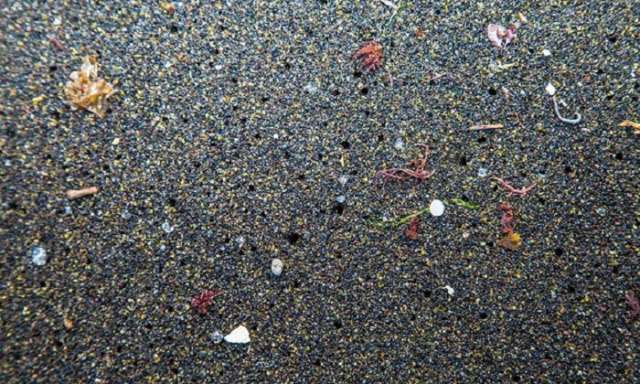Microplastic pollution comes from the fragmentation of larger pieces of plastic waste, small synthetic fibres from clothing and the microbeads used in cosmetics and other products. The microbeads in scrubs, shower gels and toothpastes are an avoidable part of this plastic pollution problem. A single shower could result in 100,000 plastic particles entering the ocean, said the committee chair, Mary Creagh.
“We need a full, legal ban, preferably at an international level as pollution does not respect borders,” she added. “If this isn’t possible after our vote to leave the EU, then the government should introduce a national ban. The best way to reduce this pollution is to prevent plastic being flushed into the sea in the first place.”
Many large cosmetics companies have made voluntary commitments to phase out microbeads by 2020. But the committee said a national ban, preferably starting within 18 months, would have advantages for consumers and the industry in terms of consistency, universality and confidence. It is a significant and avoidable environmental problem. Addressing it would show commitment to reducing the wider problem of microplastics.
Microbeads are part of the wider issue of microplastics. Their small size means that they can be ingested by marine life and have the potential to transfer chemicals to and from the marine environment.
Between 80,000 and 219,000 tonnes of microplastics enter the European marine environment a year. Opportunities to capture microplastics through enhanced washing-machine filtration systems and improved waste and water sewage treatment processes must also be explored.
The committee called for urgent research, saying: “If someone eats six oysters, it is likely they will have eaten 50 particles of microplastics. Relatively little research has been done on potential impacts to human health or the marine ecology.”
Most of the world’s ocean plastics by weight are large pieces of debris (eg fishing equipment, bottles and plastic bags). However, the dominant type of debris by quantity is microplastics. It is estimated that 15-51tn microplastic particles have accumulated in the ocean, with microplastics reported at the sea surface and on shorelines worldwide. They are also present in remote locations including deep sea sediments and arctic sea ice.
Richard Thompson, director of the international marine litter research unit at Plymouth University, said: “Microbeads in cosmetics are an avoidable source of microplastic to the environment and so legislation would be a welcome step.”
Tamara Galloway, at the University of Exeter, agreed. “Pollution from microbeads is a truly global problem,” she said. “Tides and currents can carry pollution across oceans to countries a long distance from where they were originally released. Ideally, any legislation to control them should be on an international level.”
More about:
















































